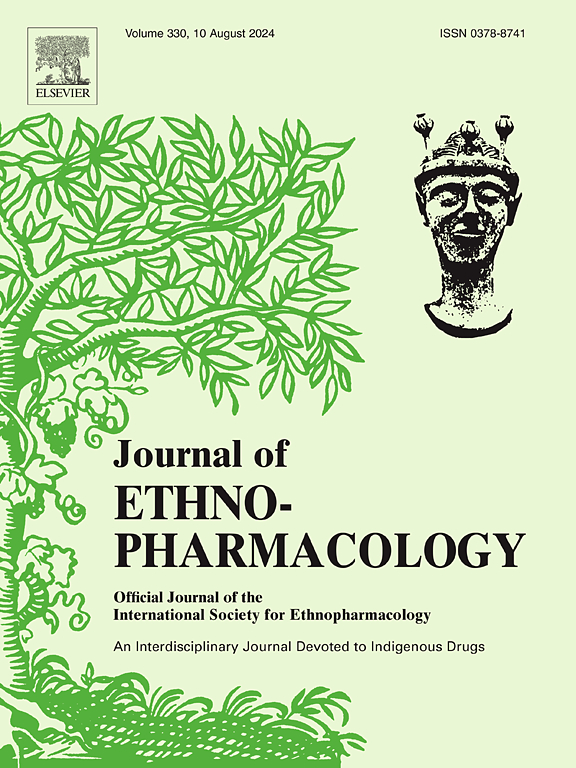The effects of Cheonwangbosim-dan, a traditional herbal medicine prescription, on scopolamine-induced cognitive dysfunction in mice
IF 4.8
2区 医学
Q1 CHEMISTRY, MEDICINAL
引用次数: 0
Abstract
Ethnopharmacological relevance
Cheonwangbosim-dan (CWBSD) as a traditional herbal medicine prescription has been used for cognitive dysfunction in terms of heart blood deficiency, however, there were few researches for cognitive dysfunction and its mode of action.
Aim of the study
This study was aimed to examine the effects of CWBSD on hypocholinergic-induced memory impaired mice and unveil its mechanism of action on cognitive function.
Materials and methods
The standardized CWBSD was used in the present study. Several behavioral tests, including Y-maze task, the Morris water maze task (MWM), novel object recognition test (NORT) and passive avoidance test (PAT), were employed with administration of CWBSD (150, 500 or 1500 mg/kg) in scopolamine-treated mice. After behavioral tests, the mice were sacrificed and the Western blot analysis and electrophysiological analysis were conducted to investigate the mechanism of CWBSD on ameliorating cognitive function.
Results
The administration of CWBSD improved cognitive functions measured by the Y-maze task, MWM, NORT and PAT in scopolamine-induced cognitive impaired mice. This memory improvement effect was associated with the activation of protein kinase C zeta (PKCζ)/calcium-calmodulin-dependent protein kinase Ⅱ (CaMKⅡ)-extracellular signal-regulated kinase (ERK)-cAMP response element-binding protein (CREB)-brain-derived neurotropic factor (BDNF) pathway via N-methyl-D-aspartate receptor subtype 2B (NR2B), and the activation of this pathway increased long-term potentiation in the brain of mice.
Conclusion
The administration of CWBSD could ameliorate spatial memory, recognition memory and long-term memory, and such ameliorating activities would be derived from the activation of NMDA receptor-associated pathway with increase of LTP in the brain. These results suggests that CWBSD would be a candidate for a new dementia treatment.

求助全文
约1分钟内获得全文
求助全文
来源期刊

Journal of ethnopharmacology
医学-全科医学与补充医学
CiteScore
10.30
自引率
5.60%
发文量
967
审稿时长
77 days
期刊介绍:
The Journal of Ethnopharmacology is dedicated to the exchange of information and understandings about people''s use of plants, fungi, animals, microorganisms and minerals and their biological and pharmacological effects based on the principles established through international conventions. Early people confronted with illness and disease, discovered a wealth of useful therapeutic agents in the plant and animal kingdoms. The empirical knowledge of these medicinal substances and their toxic potential was passed on by oral tradition and sometimes recorded in herbals and other texts on materia medica. Many valuable drugs of today (e.g., atropine, ephedrine, tubocurarine, digoxin, reserpine) came into use through the study of indigenous remedies. Chemists continue to use plant-derived drugs (e.g., morphine, taxol, physostigmine, quinidine, emetine) as prototypes in their attempts to develop more effective and less toxic medicinals.
 求助内容:
求助内容: 应助结果提醒方式:
应助结果提醒方式:


